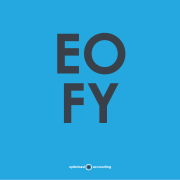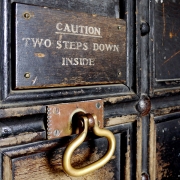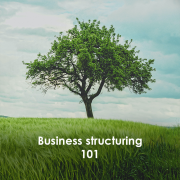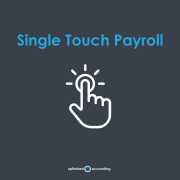Running your own business can be rewarding, but there is also risk involved when you put your own money and reputation on the line. What would you do if your shop was destroyed by fire, a client sued over advice you gave, or your business was disrupted for months in the aftermath of a freak storm?

The financial loss to a small business from an unforeseen event can be devastating, which is why it pays to manage risk and protect your livelihood. Yet a surprising 19 per cent of Australian small to medium enterprises (SMEs) have no insurance, according to a QBE Business Risk Report.i
The main reason given for having no insurance, or inadequate insurance cover, is cost. But when your livelihood is a stake, can you afford not to be covered?
What are the risks?
There’s no one-size-fits-all insurance solution for small businesses. Before you purchase cover, you need to think about the potential risks you face and this will depend on the nature of your business.
For a restaurant, food poisoning is one potential hazard. The theft of tools or injury to a passer-by could prove costly for a builder, while a claim of professional negligence could do financial and reputational damage to an IT consultant. If that consultant works from home and a client trips and breaks a leg on the stairs, they could face a large claim for damages.
Most of the risks faced by small business fall into three broad categories: assets, income and liability.
Types of insurance
Asset protection
Common types of asset protection cover you for theft, loss or damage to buildings, contents, plant and equipment, motor vehicles and stock. You can also cover the loss or damage of goods in transit by rail, road, air and sea.
While most businesses have some level of asset protection, risks to income are often overlooked.
Income protection
Say you run a café and it’s destroyed by fire, you will lose profit on goods you have purchased for sale. Or if you are a solicitor and your office is damaged by flood, you won’t lose stock but you do stand to lose revenue from the loss of business until you repair the damage or find alternative premises.
Business interruption insurance covers you for loss of income and increased expenses if your premises or fixed assets are damaged. While online businesses may need to consider insuring against loss of income due to computer breakdown or cybercrime.
Liability
Liability insurance covers risks to you, your employees or members of the public you deal with.
Public liability insurance covers you for death or injury to third parties arising from your negligence and may be compulsory for some businesses. Product liability covers you for damage, injury or death to another person caused by the failure of a product, services or repairs you are selling. And if you are in the business of giving advice, professional indemnity protects you from legal action if someone suffers a loss after following your advice or receiving your service.
What will it cost?
There’s a lot to think about when you are starting a business or reviewing your operations, so it’s not surprising that a complex decision like insurance often ends up in the too-hard and too expensive basket.
The amount you pay for insurance will vary according to the nature of your business, the risks it’s exposed to and the policy’s inclusions and exclusions.
We work closely with financial planners and have some great ones to recommend. Let us know if you’d like to have a deeper discussion.
Want articles like this emailed to you?
Stay in touch with us by signing up to our monthly newsletter – you’ll receive business due dates, news, tax tips and other important things that we think are useful and interesting.
This article was written by a third party.
i ‘Biggest threats to Australian SMEs revealed’, Insurance Business Australia, 12 April 2018, https://www.insurancebusinessmag.com/au/news/breaking-news/biggest-threats-to-australian-smes-revealed-97563.aspx
